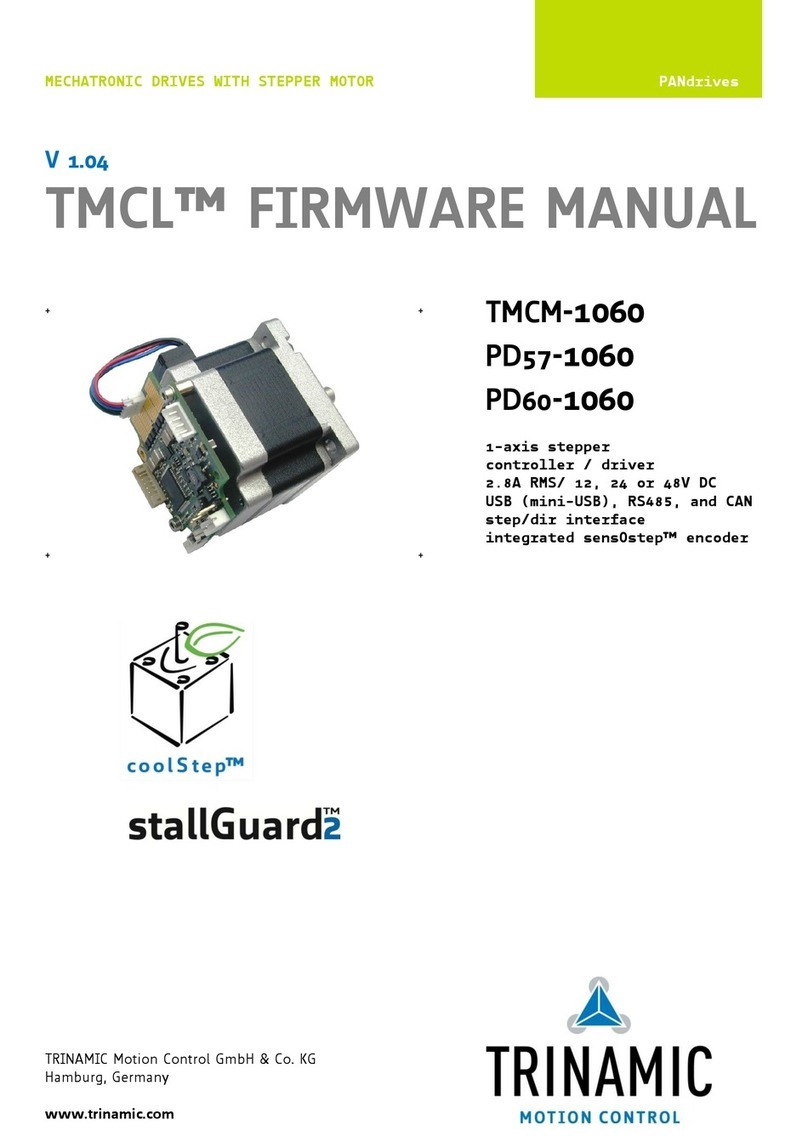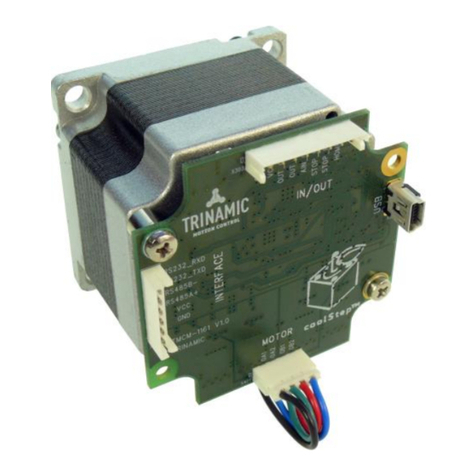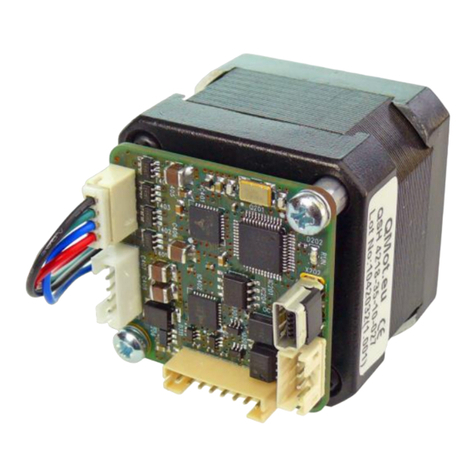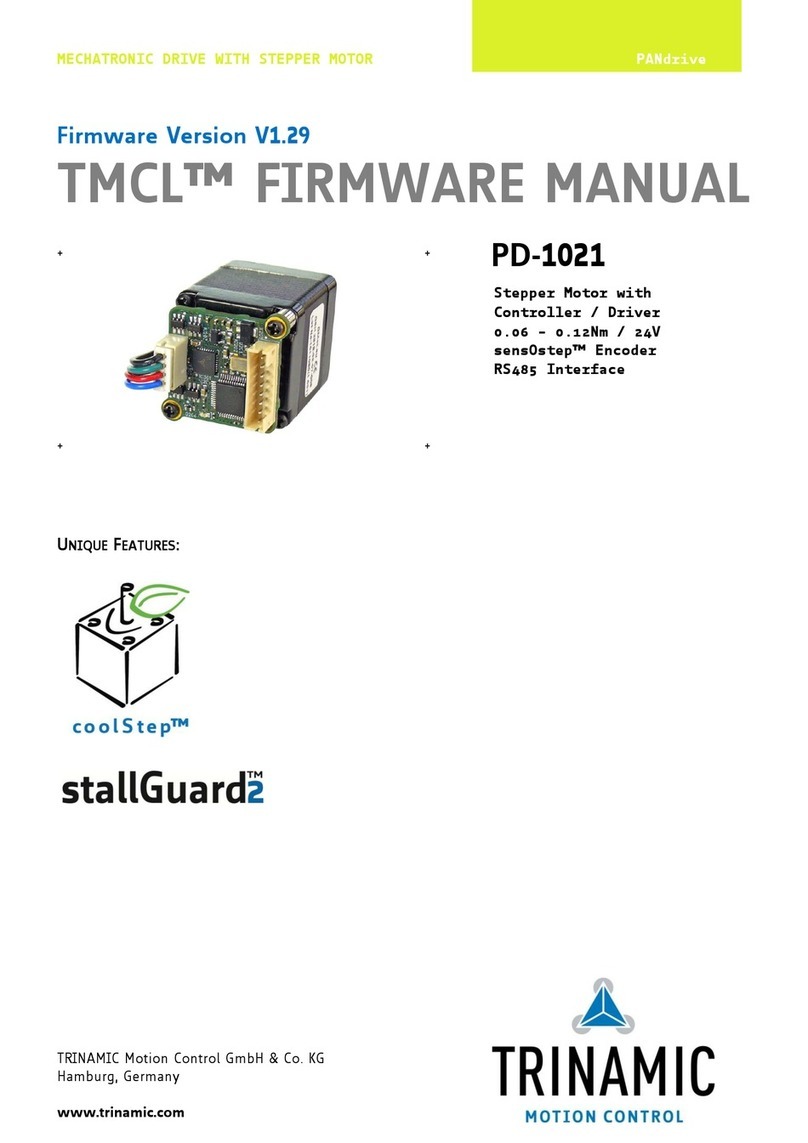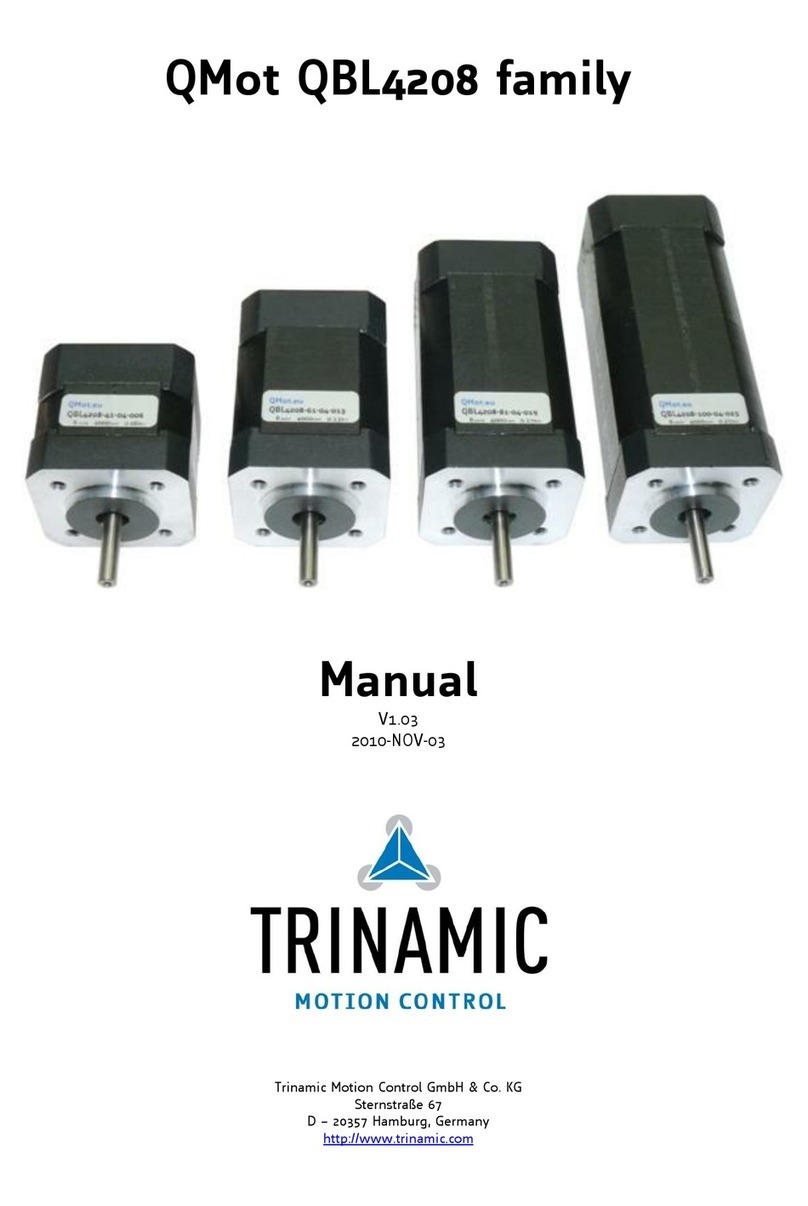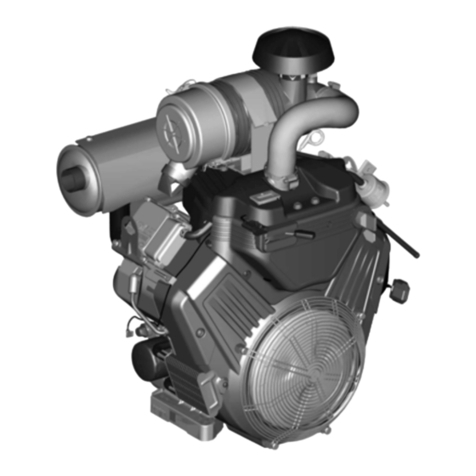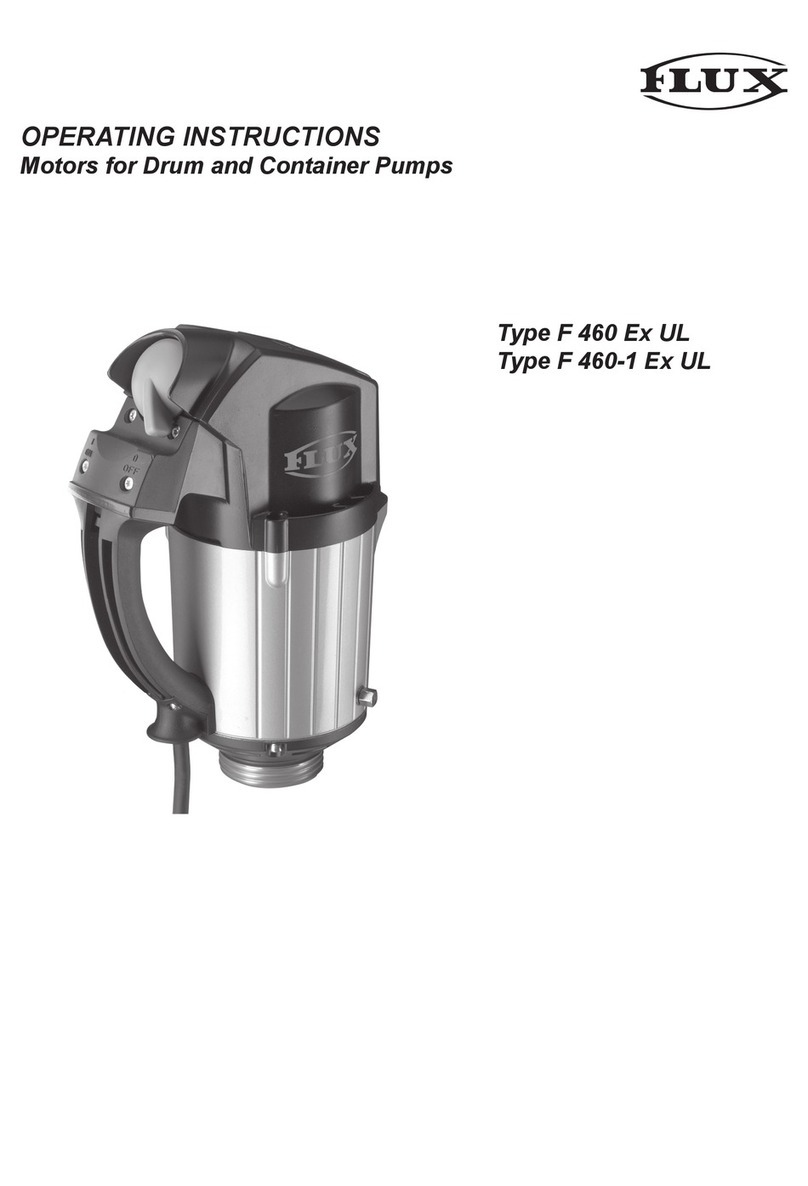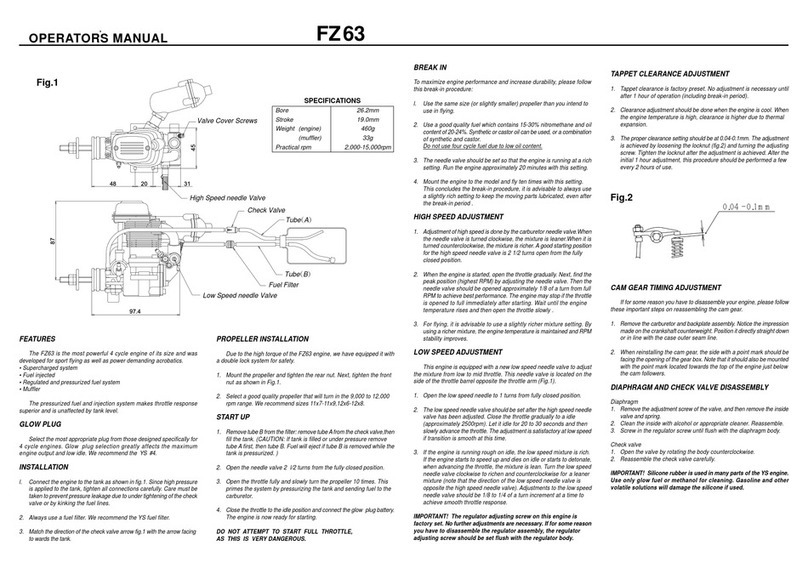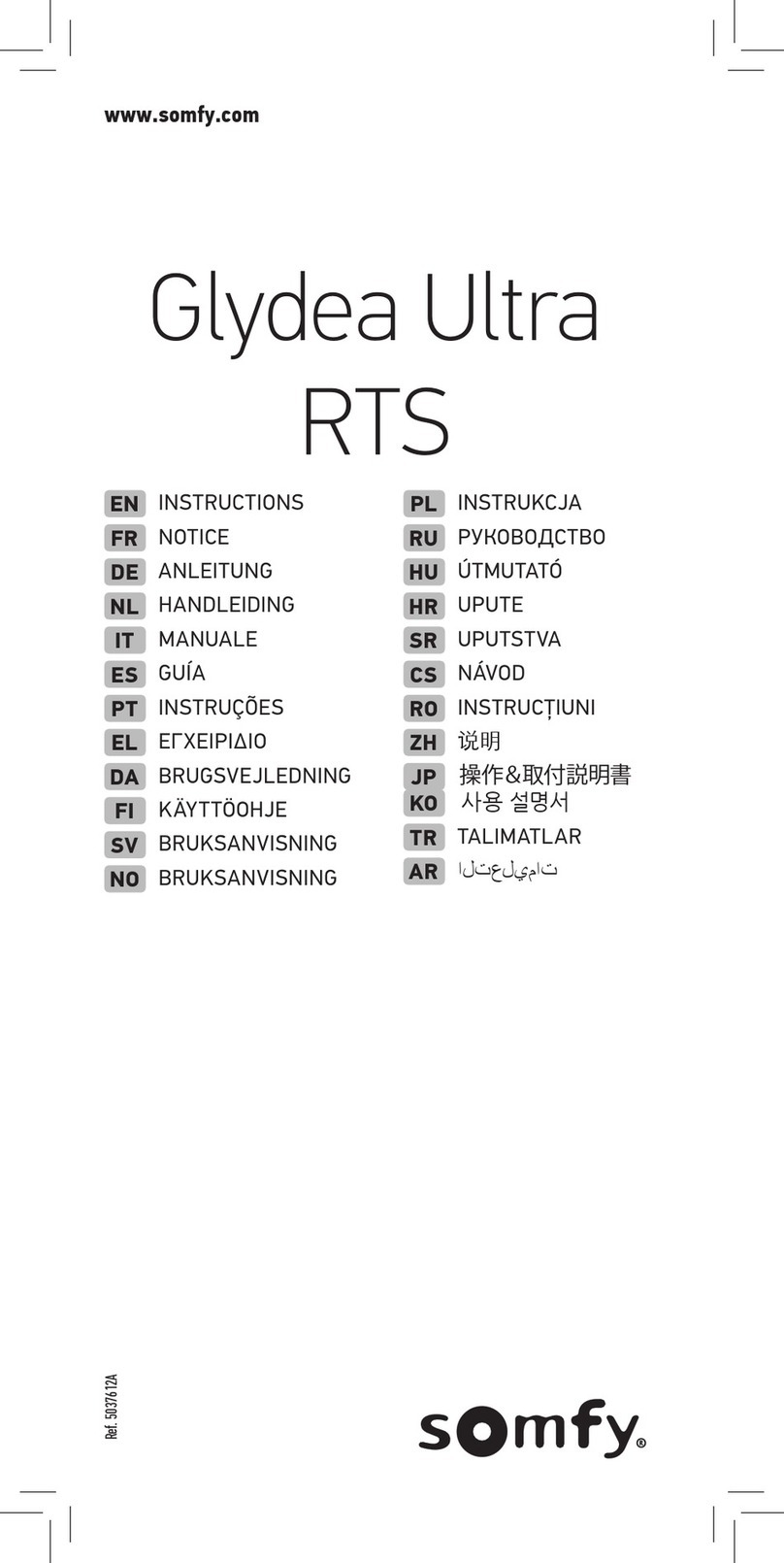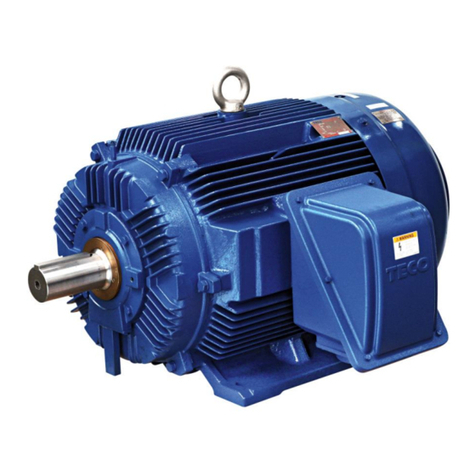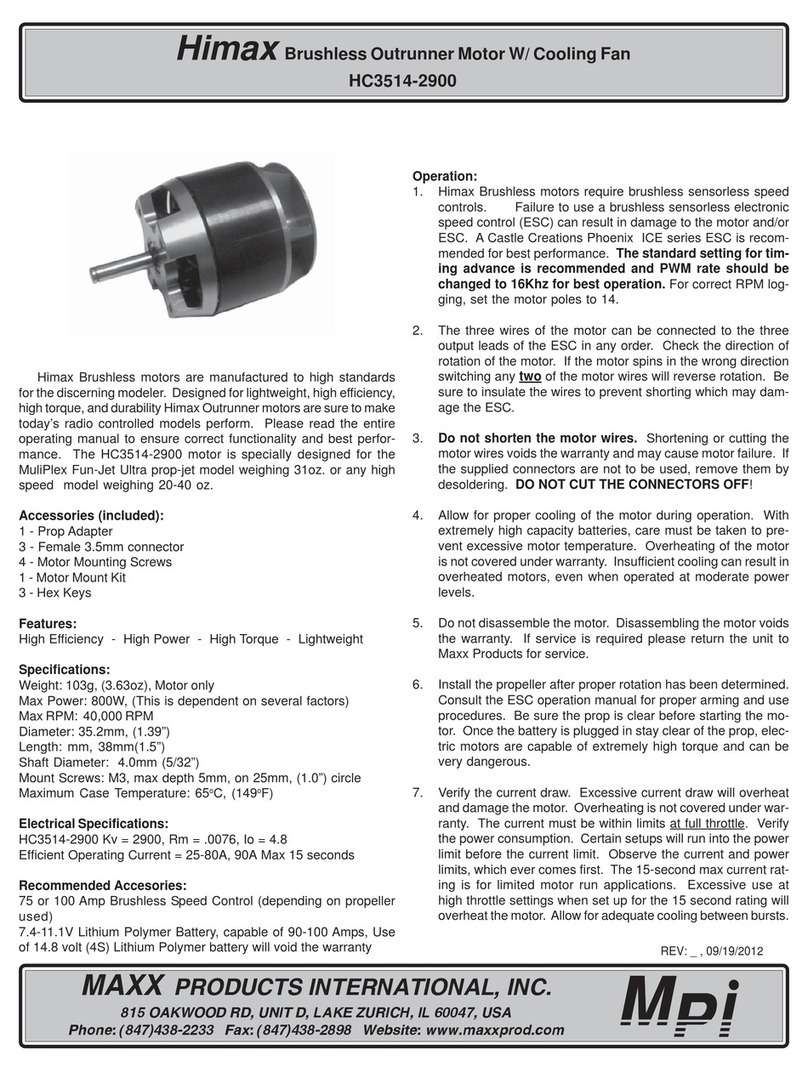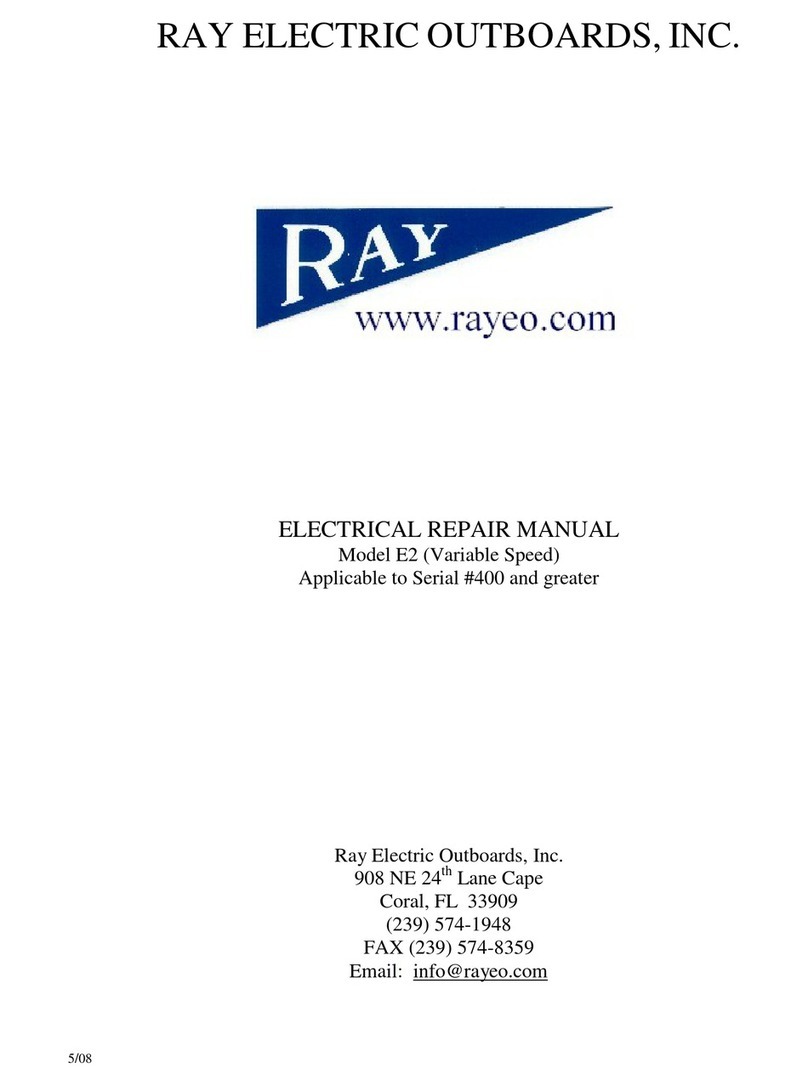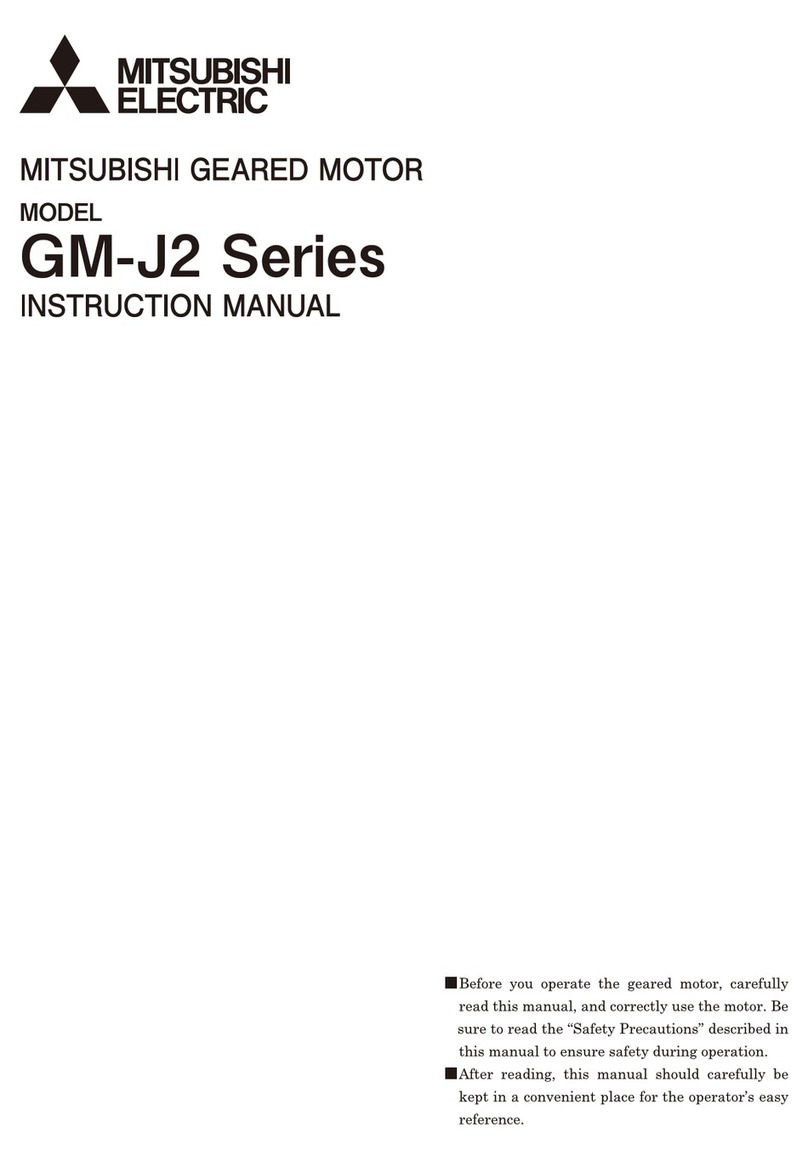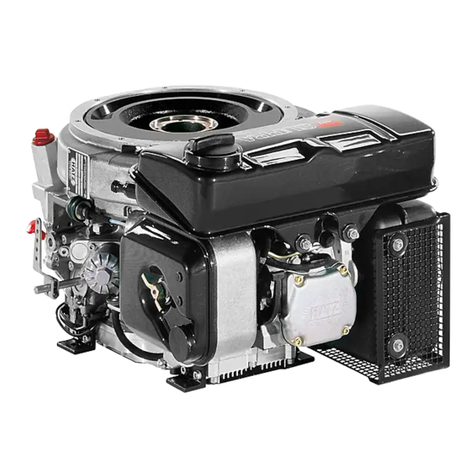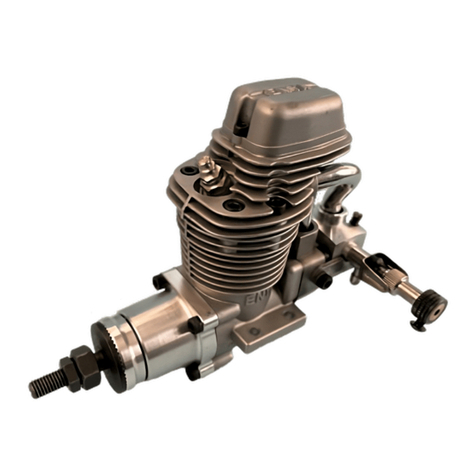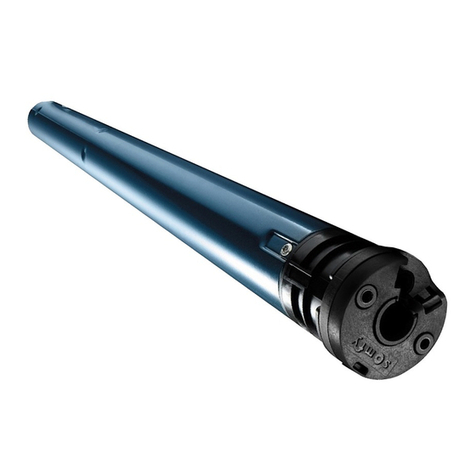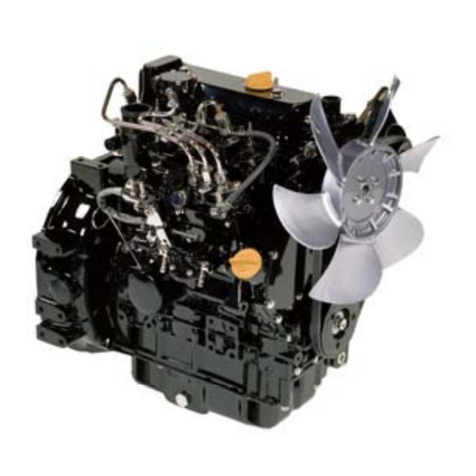Trinamic PANdrive PD-1021 User manual

MECHATRONIC DRIVE WITH STEPPER MOTOR PANdrive
TRINAMIC Motion Control GmbH & Co. KG
Hamburg, Germany
www.trinamic.com
Hardware Version V1.2
HARDWARE MANUAL
++PD-1021
+ +
UNIQUE FEATURES:
Stepper Motor with
Controller / Driver
0.06 - 0.12Nm / 24V
sensOstep™Encoder
RS485 Interface

PD-1021 V1.2 Hardware Manual (Rev. 1.01 / 2013-JUL-23)2
www.trinamic.com
Table of Contents
1Features........................................................................................................................................................................... 3
2Order Codes ................................................................................................................................................................... 5
3Mechanical and Electrical Interfacing..................................................................................................................... 6
3.1 Dimensions ........................................................................................................................................................... 6
3.1.1 Dimensions of PD28-1-1021 ....................................................................................................................... 6
3.1.2 Dimensions of PD28-3-1021 ....................................................................................................................... 7
3.2 Motor Characteristics .......................................................................................................................................... 8
3.3 Connectors............................................................................................................................................................. 9
3.3.1 Power, Communication and I/O Connector ........................................................................................ 10
3.3.2 Motor Connector.......................................................................................................................................... 11
3.4 Power Supply ..................................................................................................................................................... 12
3.5 Communication .................................................................................................................................................. 13
3.5.1 RS485 .............................................................................................................................................................. 13
3.6 Inputs and Outputs .......................................................................................................................................... 14
3.6.1 Digital Inputs IN_0, IN_1, IN_2, IN_3 .................................................................................................... 14
3.6.2 Outputs OUT_0, OUT_1 ............................................................................................................................... 15
4Reset to Factory Defaults......................................................................................................................................... 16
5On-board LED............................................................................................................................................................... 16
6Operational Ratings ................................................................................................................................................... 17
7Torque Curves ............................................................................................................................................................. 18
8Functional description .............................................................................................................................................. 19
9Life Support Policy..................................................................................................................................................... 20
10 Revision History.......................................................................................................................................................... 21
10.1 Document Revision ........................................................................................................................................... 21
10.2 Hardware Revision ............................................................................................................................................ 21
11 References .................................................................................................................................................................... 21

PD-1021 V1.2 Hardware Manual (Rev. 1.01 / 2013-JUL-23)3
www.trinamic.com
1Features
The PANdrive™ PD-1021 is a full mechatronic extremely small and compact solution with state of the art
feature set. It is highly integrated and offers a convenient handling. The PD-1021 includes a stepper
motor, controller/driver electronics, and TRINAMICs sensOstep™ encoder. It can be used in many
decentralized applications and has been designed for 0.06… 0.12 Nm max. holding torque and 24V DC
nominal supply voltage. With its high energy efficiency from TRINAMIC’s coolStep technology cost for
power consumption is kept down. The TMCL™ firmware allows for standalone operation and direct
mode.
MAIN CHARACTERISTICS
Highlights
-Motion profile calculation in real-time
-On the fly alteration of motor parameters (e.g. position, velocity, acceleration)
-High performance microcontroller for overall system control and serial communication protocol
handling
-For position movement applications, where larger motors do not fit and higher torques are not
required
Bipolar stepper motor driver
-Up to 256 microsteps per full step
-High-efficient operation, low power dissipation
-Dynamic current control
-Integrated protection
-stallGuard2 feature for stall detection
-coolStep feature for reduced power consumption and heat dissipation
-ready for dcStep
Encoder
-sensOstep magnetic encoder (max. 1024 increments per rotation) e.g. for step-loss detection under
all operating conditions and positioning supervision
Interfaces
-Up to 4 multi-purpose inputs (2 shared with outputs)
-2 general purpose outputs
-RS485 2-wire communication interface
Software
-TMCL: standalone operation or remote controlled operation,
program memory (non volatile) for up to 876 TMCL commands, and
PC-based application development software TMCL-IDE available for free.
Electrical and mechanical data
-Supply voltage: +24V DC nominal (9… 28V DC)
-Motor current: up to 0.7A RMS (programmable)
-0.06 or 0.12Nm max. holding torque (depends on motor)
Refer to separate TMCL Firmware Manual, too.

PD-1021 V1.2 Hardware Manual (Rev. 1.01 / 2013-JUL-23)4
www.trinamic.com
TRINAMICS UNIQUE FEATURES –EASY TO USE WITH TMCL
stallGuard2™stallGuard2 is a high-precision sensorless load measurement using the back EMF on the
coils. It can be used for stall detection as well as other uses at loads below those which
stall the motor. The stallGuard2 measurement value changes linearly over a wide range
of load, velocity, and current settings. At maximum motor load, the value goes to zero or
near to zero. This is the most energy-efficient point of operation for the motor.
Load
[Nm]
stallGuard2
Initial stallGuard2
(SG) value: 100%
Max. load
stallGuard2 (SG) value: 0
Maximum load reached.
Motor close to stall.
Motor stalls
Figure 1.1 stallGuard2 load measurement SG as a function of load
coolStep™coolStep is a load-adaptive automatic current scaling based on the load measurement via
stallGuard2 adapting the required current to the load. Energy consumption can be
reduced by as much as 75%. coolStep allows substantial energy savings, especially for
motors which see varying loads or operate at a high duty cycle. Because a stepper motor
application needs to work with a torque reserve of 30% to 50%, even a constant-load
application allows significant energy savings because coolStep automatically enables
torque reserve when required. Reducing power consumption keeps the system cooler,
increases motor life, and allows reducing cost.
0
0,1
0,2
0,3
0,4
0,5
0,6
0,7
0,8
0,9
0 50 100 150 200 250 300 350
Efficiency
Velocity [RPM]
Efficiency with coolStep
Efficiency with 50% torque reserve
Figure 1.2 Energy efficiency example with coolStep

PD-1021 V1.2 Hardware Manual (Rev. 1.01 / 2013-JUL-23)5
www.trinamic.com
2Order Codes
The combination of motor and motor mounted controller/driver electronic is currently available with two
stepper motors (different length and holding torque).
The length of the PANdrives™ is specified without the length of the axis. For the overall length of the
product please add 21 mm.
Order code
Description
Size of unit [mm3]
PD28-1-1021-option
PANdrive 0.06Nm max. holding torque*)
28 x 28 x 43 max.
PD28-3-1021-option
PANdrive 0.12Nm max. holding torque*)
28 x 28 x 62 max.
Table 2.1 Order codes
The following options are currently available:
Firmware option
Description
Order code example:
-TMCL
Module pre-programmed with TMCL firmware
PD28-1-1021-TMCL
Table 2.3 PD-1021 firmware options
A cable loom set is available for this module:
Order code
Description
PD-1021-CABLE
Cable loom for PD-1021
1x cable loom for power, communication and I/O connector (length 200mm)
Table 2.5 Cable loom order code

PD-1021 V1.2 Hardware Manual (Rev. 1.01 / 2013-JUL-23)6
www.trinamic.com
3Mechanical and Electrical Interfacing
The PD-1021 consists of a 28mm / NEMA 11 stepper motor with controller/driver electronics mounted to
the back of the motor.
Note:
In order to make proper use of the integrated sensOstep encoder (the sensor IC is placed on the bottom
of the pcb) the electronics should not be removed/moved relative to the motor. In case this encoder
feature is not used, the electronics may be mounted according to different application requirements.
3.1 Dimensions
Currently, there is a choice between two 28mm stepper motors of different lengths and different torques.
The board with the controller/driver electronics has an overall size of 28mm x 28mm in order to fit on
the back side of a NEMA11 (28mm flange size) stepper motor. The printed circuit board outline is marked
green in the following figure.
Please also refer to the manuals of the related stepper motors QSH2818-32-07-006 and QSH2818-51-07-
012.
3.1.1 Dimensions of PD28-1-1021
28
2
22-0.05
20±1
5
4.5
43 max
15±0.2
28
28
25.5
25.5 2.5
23
26
R 2
ø2.6
R 2.5
Rear view
28
23±0.2
23±0.2 28
Front view
M2.5
deep 4.5 22-0.05
5
30+1
32
Figure 3.1 PD28-1-1021 dimensions

PD-1021 V1.2 Hardware Manual (Rev. 1.01 / 2013-JUL-23)7
www.trinamic.com
3.1.2 Dimensions of PD28-3-1021
2
22-0.05
20±1
5
4.5
15±0.2
28
28
25.5
25.5 2.5
23
26
R 2
ø2.6
R 2.5
Rear view
28
23±0.2
23±0.2 28
Front view
M2.5
deep 4.5 22-0.05
5
28 30+1
62 max
51
Figure 3.2 PD28-3-1021 with 2-phase 28mm stepper motor QSH2818-51-07-012

PD-1021 V1.2 Hardware Manual (Rev. 1.01 / 2013-JUL-23)8
www.trinamic.com
3.2 Motor Characteristics
Main characteristics of the two different motors available as part of the PD-1021:
Specifications
Parameter
Units
QSH2818
-32-07-006
-51-07-012
Rated Voltage
VRATED
V
3.8
6.2
Rated Phase Current
IRMS_RATED
A
0.67
0.67
Phase Resistance at 20°C
RCOIL
Ω
5.6
9.2
Phase Inductance (typ.)
mH
3.4
7.2
Holding Torque (typ.)
Ncm
6
12
oz in
8.5
17.0
Detent Torque
Ncm
Rotor Inertia
g cm2
9
18
Weight (Mass)
Kg
0.11
0.2
Insulation Class
B
B
Insulation Resistance
Ω
100M
100M
Dialectic Strength (for one minute)
VAC
500
500
Connection Wires
N°
4
4
Step Angle
°
1.8
1.8
Step angle Accuracy (max.)
%
5
5
Flange Size (max.)
mm
28.0
28.0
Motor Length (max.)
LMAX
mm
32
51
Axis Diameter
mm
5.0
5.0
Axis Length (typ.)
mm
20.0
20.0
Shaft Radial Play (450g load)
mm
0.02
0.02
Shaft Axial Play (450g load)
mm
0.08
0.08
Maximum Radial Force
(20 mm from front flange)
N
28
28
Maximum Axial Force
N
10
10
Ambient Temperature
°C
-20…+50
-20…+50
Temp Rise (rated current, 2phase on)
°C
max. 80
max. 80
Related PANdrive
type
PD28-1-1021
PD28-3-1021
Table 3.1 NEMA 11 / 28mm technical motor data

PD-1021 V1.2 Hardware Manual (Rev. 1.01 / 2013-JUL-23)9
www.trinamic.com
3.3 Connectors
The PD-1021 has two connectors, an 8-pin power and input/output connector and a 4-pin motor
connector (used to connect the attached motor).
1
1
Power / Communication / IOs
Motor
Figure 3.3 PD-1021 connectors
Overview of connector and mating connector types:
Label
Connector type
Mating connector types
Power,
communication
and I/O
CI0108P1VK0-LF
CVIlux CI01 series, 8pins, 2mm
pitch
Connector housing CVIlux: CI01085000-A
Contacts CVIlux: CI01T011PE0-A
or
Connector housing JST: PHR-8
Contacts JST: SPH-002T-P0.5S
Wire: 0.22mm2
Motor
CI0104P1VK0-LF
CVIlux CI01 series, 4 pins, 2mm
pitch
Connector housing CVIlux: CI01045000-A
Contacts CVIlux: CI01T011PE0-A
or
Connector housing JST: PHR-4
Contacts JST: SPH-002T-P0.5S
Wire: 0.22mm2
Table 3.2 Connectors and mating connectors, contacts and applicable wire

PD-1021 V1.2 Hardware Manual (Rev. 1.01 / 2013-JUL-23)10
www.trinamic.com
3.3.1 Power, Communication and I/O Connector
An 8-pin CVIlux CI0108P1VK0-LF 2mm pitch single row connector is used for power supply, RS485 serial
communication and additional multi-purpose inputs and outputs.
Pin
Label
Direction
Description
1
GND
Power (GND)
GND
2
VDD
Power (Supply)
VDD (+9V…+28V)
3
RS485+
Bidirectional
RS485 interface, diff. signal (non-inverting)
4
RS485-
Bidirectional
RS485 interface, diff. signal (inverting)
5
IN_0
Input
Digital input (+24V compatible)
Alternate function 1: step input
Alternate function 2: left stop switch
6
IN_1
Input
Digital input (+24V compatible)
Alternate function 1: direction input
Alternate function 2: right stop switch
7
OUT_0 / IN_2
Output / Input
Open drain output with freewheeling diode
(max. 100mA)
Alternate function 1:
digital input (+24V compatible)
Alternate function 2:home switch
8
OUT_1 / IN_3
Output / Input
Open drain output with freewheeling diode
(max. 100mA)
Alternate function 1: digital input
(+24V compatible)
Alternate function 2: analog input
Table 3.3 Power, communication and I/O connector

PD-1021 V1.2 Hardware Manual (Rev. 1.01 / 2013-JUL-23)11
www.trinamic.com
3.3.2 Motor Connector
A 4-pin CVIlux CI0104P1VK0-LF 2mm pitch single row connector is used for connecting the four motor
wires to the electronics.
Pin
Label
Direction
Description
1
OB2
Output
Pin 2 of motor coil B
2
OB1
Output
Pin 1 of motor coil B
3
OA2
Output
Pin 2 of motor coil A
4
OA1
Output
Pin 1 of motor coil A
Table 3.4 Motor connector
PD-1021
QSH2818 Motor
Motor connector pin
Cable colour
Coil
Description
1
Blue
B-
Motor coil B pin 2
2
Red
B
Motor coil B pin 1
3
Green
A-
Motor coil A pin 2
4
Black
A
Motor coil A pin 1
CAUTION!
Keep the electronics free of (metal) particles!
The integrated sensOstep™ encoder uses a magnet at the end of the motor axis in order
to monitor position. The magnet naturally attracts especially tiny metal particles. These
particles might be held on the top side of the PCB and even worse –start moving in
accordance with the rotating magnetic field as soon as the motor starts moving. This
might lead to shorts of electronic contacts / wires on the board and totally erratic
behavior of the module! Use compressed air for cleaning the module if necessary.
M
black
green
red
blue
A
B

PD-1021 V1.2 Hardware Manual (Rev. 1.01 / 2013-JUL-23)12
www.trinamic.com
3.4 Power Supply
For proper operation care has to be taken with regard to power supply concept and design. Due to space
restrictions the PD-1021 includes just about 20µF/35V of supply filter capacitors. These are ceramic
capacitors which have been selected for high reliability and long life time. The module includes a 28V
suppressor diode for over-voltage protection.
CAUTION!
Add external power supply capacitors!
It is recommended to connect an electrolytic capacitor of significant size (e.g.
470µF/35V) to the power supply lines next to the TMCM-1021!
Rule of thumb for size of electrolytic capacitor:
In addition to power stabilization (buffer) and filtering this added capacitor will also
reduce any voltage spikes which might otherwise occur from a combination of high
inductance power supply wires and the ceramic capacitors. In addition it will limit
slew-rate of power supply voltage at the module. The low ESR of ceramic-only filter
capacitors may cause stability problems with some switching power supplies.
Do not connect or disconnect motor during operation!
Motor cable and motor inductivity might lead to voltage spikes when the motor is
disconnected / connected while energized. These voltage spikes might exceed voltage
limits of the driver MOSFETs and might permanently damage them. Therefore, always
disconnect power supply before connecting / disconnecting the motor.
Keep the power supply voltage below the upper limit of 28V!
Otherwise the driver electronics will seriously be damaged! Especially, when the
selected operating voltage is near the upper limit a regulated power supply is highly
recommended. Please see also chapter 6, operating values.
There is no reverse polarity protection!
The module will short any reversed supply voltage due to internal diodes of the driver
transistors.

PD-1021 V1.2 Hardware Manual (Rev. 1.01 / 2013-JUL-23)13
www.trinamic.com
3.5 Communication
3.5.1 RS485
For remote control and communication with a host system the PD-1021 provides a two wire RS485 bus
interface. For proper operation the following items should be taken into account when setting up an
RS485 network:
1. BUS STRUCTURE:
The network topology should follow a bus structure as closely as possible. That is, the
connection between each node and the bus itself should be as short as possible. Basically, it
should be short compared to the length of the bus.
c:> node
1
node
n- 1
node
n
Host Slave Slave Slave
RS485
termination
resistor
(120 Ohm)
termination
resistor
(120 Ohm)
}
keep distance as
short as possible
Figure 3.5 Bus structure
2. BUS TERMINATION:
Especially for longer busses and/or multiple nodes connected to the bus and/or high
communication speeds, the bus should be properly terminated at both ends. The PD-1021 does
not integrate any termination resistor. Therefore, 120 Ohm termination resistors at both ends of
the bus have to be added externally.
3. NUMBER OF NODES:
The RS485 electrical interface standard (EIA-485) allows up to 32 nodes to be connected to a
single bus. The bus transceiver used on the PD-1021 units (SN65HVD3082ED) has just 1/8th of the
standard bus load and allows a maximum of 256 units to be connected to a single RS485 bus.
4. NO FLOATING BUS LINES:
Avoid floating bus lines while neither the host/master nor one of the slaves along the bus line is
transmitting data (all bus nodes switched to receive mode). Floating bus lines may lead to
communication errors. In order to ensure valid signals on the bus it is recommended to use a
resistor network connecting both bus lines to well defined logic levels. In contrast to the
termination resistors this network is normally required just once per bus. Certain RS485 interface
converters available for PCs already include these additional resistors (e.g. USB-2-485).
node
n- 1
node
n
Slave Slave
termination
resistor
(120 Ohm)
+5V
GND
pull-up (1k)
pull-down (1k)
RS485- / RS485B
RS485+ / RS485A
Figure 3.6 Bus lines with resistor network

PD-1021 V1.2 Hardware Manual (Rev. 1.01 / 2013-JUL-23)14
www.trinamic.com
3.6 Inputs and Outputs
3.6.1 Digital Inputs IN_0, IN_1, IN_2, IN_3
The eight pin connector of the PD-1021 provides four general purpose inputs IN_0, IN_1, IN_2 and IN_3.
The first two inputs have dedicated connector pins while the other two share pins with two general
purpose outputs.
All four inputs are protected using voltage resistor dividers together with limiting diodes against
voltages below 0V (GND) and above +3.3V DC (see figure below).
+3.3V
IN_0
IN_1
IN_2
IN_3
microcontroller
and TMC262
10k
10k
1nF
GND GND GND
Figure 3.7 General purpose inputs
The four inputs have alternate functionality depending on configuration in software. The following
functions are available:
Label
(connector pin)
Default Function
Alternate function 1
Alternate function 2
IN_0 (5)
Digital input
Step signal input
(connected to TMC262 step
input)
Left stop switch
IN_1 (6)
Digital input
Direction signal input
(connected to TMC262
direction input)
Right stop switch
OUT_0 / IN_2 (7)
Output
Digital input
Home switch
OUT_1 / IN_3 (8)
Output
Digital input
Analog input
(0… +6.6V, 12bit resolution)
Table 3.5 Multipurpose inputs / alternate functions
All four inputs are connected to the on-board processor and can be used as general purpose digital
inputs.
Using the alternate functionality of IN_0 and IN_1 it is possible to control the on-board stepper motor
driver with the help of an external stepper motor controller using step and direction signals. For the step
and direction signals the signal levels are the same as for the general purpose digital inputs.
IN_3 can be used as analog input, also. A 12bit analog to digital converter integrated in the
microcontroller will convert any analog input voltage between 0 and +6.6V to a digital value between 0
and 4095 then.

PD-1021 V1.2 Hardware Manual (Rev. 1.01 / 2013-JUL-23)15
www.trinamic.com
3.6.2 Outputs OUT_0, OUT_1
The eight pin connector of the PD-1021 provides two general purpose outputs. These two outputs are
open-drain outputs and can sink up to 100mA each. The outputs of the N-channel MOSFET transistors are
connected to freewheeling diodes each for protection against voltage spikes especially from inductive
loads (relais etc.).
Both outputs OUT_0 and OUT_1 share pins with two of the four inputs (IN_2 resp. IN_3).
Please take into account the 20k (2x 10k in series) resistance to ground (transistor not active) of the input
voltage divider (figure 4.8) when designing the external “load” circuit.
VDD
OUT_0 / IN_2
OUT_1 / IN_3
microcontroller
GND
+3.3V
microcontroller
10k
10k
1nF
GND GND GND
Figure 3.8 General purpose outputs

PD-1021 V1.2 Hardware Manual (Rev. 1.01 / 2013-JUL-23)16
www.trinamic.com
4Reset to Factory Defaults
It is possible to reset the PD-1021 to factory default settings without establishing a communication link.
This might be helpful in case communication parameters of the preferred interface have been set to
unknown values or got accidentally lost.
For this procedure two pads on the bottom side of the board have to be shortened (see Figure 4.1).
Please perform the following steps:
1. Power supply off
2. Short two pads as marked in Figure 4.1
3. Power up board
4. Wait until the on-board green LED start flashing fast (this might take a while)
5. Power-off board (disconnect USB cable)
6. Remove short between pads
7. After switching on the power-supply all permanent settings have been restored to factory
defaults
Short these two pads
Figure 4.1 Reset to factory default settings
5On-board LED
The board offers one LED in order to indicate board status. The function of the LED is dependent on the
firmware version. With standard TMCL firmware the green LED flashes slowly during operation.
When there is no valid firmware programmed into the board or during firmware update the green LED is
permanently on.
Green LED
Figure 5.1 On-board LED

PD-1021 V1.2 Hardware Manual (Rev. 1.01 / 2013-JUL-23)17
www.trinamic.com
6Operational Ratings
The operational ratings show the intended or the characteristic ranges and should be used as design
values.
In no case shall the maximum values be exceeded!
Symbol
Parameter
Min
Typ
Max
Unit
VDD
Power supply voltage for operation
9
12… 24
28
V
ICOIL
Motor coil current for sine wave peak (chopper
regulated, adjustable via software)
0
1000*)
mA
IMC
Continuous motor current (RMS)
0
700*)
mA
IS
Power supply current
<< ICOIL
1.4 * ICOIL
A
TENV
Environment temperature at rated current (no
forced cooling required)
-35
tbd
+60
°C
Table 6.1 General operational ratings of module
*) maximum setting for prototype and first versions of TMCL firmware. Will be adapted in firmware for
series version.
Symbol
Parameter
Min
Typ
Max
Unit
VOUT_0/1
Voltage at open collector output
0
+VDD
V
IOUT_0/1
Output sink current
100
mA
VIN_digital 0/1/2/3
Input voltage for IN_0, IN_1, IN_2, IN_3 when used
as digital input
0
+VDD
V
VIN_digital_L 0/1/2/3
Low level voltage for GPI0 and GPI1 when used as
digital input
0
1.2
V
VIN_digital_L 0/1/2/3
High level voltage for GPI0 and GPI1 when used as
digital input
4
+VDD
V
VIN_analog 3
Measurement range for IN_3 when used as
analogue input
0
+6.6
V
Table 6.2 Operational ratings of multipurpose I/Os
Symbol
Parameter
Min
Typ
Max
Unit
NRS485
Number of nodes connected to single RS485
network
256
Table 6.3 Operational ratings of RS485 interface

PD-1021 V1.2 Hardware Manual (Rev. 1.01 / 2013-JUL-23)18
www.trinamic.com
7Torque Curves
The following figures show the curve of each PANdrive.
Figure 7.1 PD28-1-1021 torque vs. speed 24V / 0.7 A, 256 µsteps
Figure 7.2 PD28-3-1021 torque vs. velocity 24V / 0.7 A, 256µsteps
0,00
0,01
0,02
0,03
0,04
0,05
0,06
0,07
0,08
0,09
0,10
10 100 1000 10000
torque[Nm]
speed[rpm]
PD21-1-1021 - 0.7A RMS Phase Current, 256 uSteps
0,00
0,02
0,04
0,06
0,08
0,10
0,12
0,14
0,16
0,18
0,20
10 100 1000 10000
torque[Nm]
speed[rpm]
PD28-3-1021 - 0.7A RMS Phase Current, 256 uSteps

PD-1021 V1.2 Hardware Manual (Rev. 1.01 / 2013-JUL-23)19
www.trinamic.com
8Functional description
The PD-1021 is a highly integrated mechatronic device which can be controlled via RS485 serial interface.
Communication traffic is kept low since all time critical operations, e.g. ramp calculations are performed
on board. Nominal supply voltage of the unit is 24V DC. The PANdrive is designed for both: direct mode
and standalone operation. Full remote control of device with feedback is possible. The firmware of the
module can be updated via any of the serial interfaces.
Figure 8.1 the main parts of the PD-1021 are shown:
-the microprocessor, which runs the TMCL operating system (connected to TMCL memory),
-the motion controller, which calculates ramps and speed profiles internally by hardware,
-the power driver with stallGuard2 and its energy efficient coolStep feature,
-the MOSFET driver stage,
-the QSH stepper motor, and
-the sensOstep encoder with resolutions of 10bit (1024 steps) per revolution.
9… 28V DC
TMCL™
Memory
4
add.
I/Os
Step
Motor
RS485 MOSFET
Driver
Stage
Energy Efficient
Driver
TMC262
Power
Driver
TMC262
with
coolStep™
sensOstep™
Encoder
SPI
PD-1021
S/D
SPI
I2C
µC
TMCM-1021
Figure 8.1: Main parts of PD-1021
The PD-1021 comes with the PC based software development environment TMCL-IDE for the Trinamic
Motion Control Language (TMCL). Using predefined TMCL high level commands like move to position a
rapid and fast development of motion control applications is guaranteed.
Please refer to the PD-1021 Firmware Manual for more information about TMCL commands.

PD-1021 V1.2 Hardware Manual (Rev. 1.01 / 2013-JUL-23)20
www.trinamic.com
9Life Support Policy
TRINAMIC Motion Control GmbH & Co. KG does not
authorize or warrant any of its products for use in life
support systems, without the specific written consent
of TRINAMIC Motion Control GmbH & Co. KG.
Life support systems are equipment intended to
support or sustain life, and whose failure to perform,
when properly used in accordance with instructions
provided, can be reasonably expected to result in
personal injury or death.
© TRINAMIC Motion Control GmbH & Co. KG 2013
Information given in this data sheet is believed to be
accurate and reliable. However neither responsibility is
assumed for the consequences of its use nor for any
infringement of patents or other rights of third parties,
which may result from its use.
Specifications are subject to change without notice.
All trademarks used are property of their respective
owners.
Other manuals for PANdrive PD-1021
2
Table of contents
Other Trinamic Engine manuals
